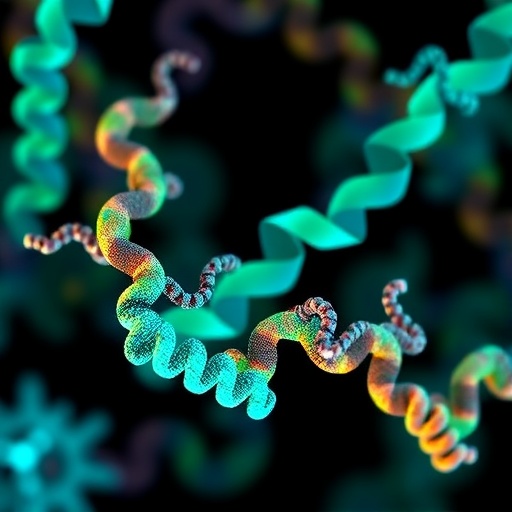ADAMTS2: Unlocking the Multifaceted Roles of a Crucial Metalloproteinase Beyond Collagen Processing
ADAMTS2, a pivotal member of the ADAMTS (A Disintegrin And Metalloproteinase with ThromboSpondin motifs) zinc metalloproteinase family, has long been recognized for its specialized enzymatic function as a procollagen I N-proteinase. This activity is essential for the post-translational maturation of fibrillar collagens, which confer strength and stability to connective tissues throughout the body. The proteolytic cleavage of N-propeptides from type I procollagen by ADAMTS2 initiates collagen fibrillogenesis, a fundamental process underpinning the structural integrity of skin, bone, and tendons. However, emerging research reveals that ADAMTS2’s biological repertoire extends far beyond its canonical role, implicating it in diverse physiological and pathological contexts that open new horizons for biomedical research and therapeutic intervention.
One of the landmark discoveries illuminating ADAMTS2’s broader significance is its direct involvement in the pathogenesis of Ehlers-Danlos syndrome dermatosparaxis type (dEDS), a rare genetic connective tissue disorder. dEDS is characterized predominantly by extreme skin fragility and poor wound healing, symptoms that can be traced to the molecular dysfunction in collagen homeostasis. Loss-of-function mutations in the ADAMTS2 gene culminate in defective cleavage of N-propeptides from type I procollagen, resulting in the pathological retention of these propeptides. This aberration leads to the formation of structurally compromised collagen fibrils that undermine tissue resilience, thereby elucidating the molecular underpinnings of skin hyperextensibility and fragility observed in dEDS patients.
Beyond its foundational role in collagen maturation, ADAMTS2 has emerged as a potent modulator of angiogenesis, the complex process through which new blood vessels form from pre-existing vasculature. This function is particularly intriguing given ADAMTS2’s demonstrated anti-angiogenic and anti-tumorigenic properties. Mechanistic insights reveal that ADAMTS2 interacts with nucleolin, a multifunctional protein abundantly expressed on endothelial cell surfaces, initiating a cascade that inhibits cellular proliferation and induces morphological remodeling. Notably, ADAMTS2 facilitates anoikis, a form of programmed cell death triggered by detachment from the extracellular matrix, thereby suppressing aberrant endothelial survival that often underlies tumor vascularization. These findings position ADAMTS2 as a promising therapeutic target for oncological interventions aiming to restrain tumor growth and metastatic dissemination by disrupting neovascular networks.
In parallel with its regulatory role in angiogenesis, ADAMTS2 has been implicated in lymphangiogenesis through the proteolytic activation of pro-VEGFC, a critical growth factor in lymphatic vessel formation. By converting pro-VEGFC into its mature, bioactive form, ADAMTS2 enhances VEGFR3 signaling pathways, which are central to lymphatic endothelial cell proliferation and migration. This biological activity highlights a crucial role for ADAMTS2 in maintaining lymphatic homeostasis, with potential ramifications in pathological states such as lymphedema and cancer metastasis via lymphatic routes. The dual capacity of ADAMTS2 to modulate both angiogenesis and lymphangiogenesis underscores its broader impact on vascular biology and disease.
Extending its influence into neurobiology, ADAMTS2 has been found to participate in neurodevelopmental processes by modulating the glycoprotein Reelin, a key regulator of neuronal migration and synaptic plasticity. ADAMTS2-mediated proteolytic cleavage of Reelin affects its functional integrity, which may lead to disruptions in neuronal positioning during brain development. This aberrant proteolysis has been linked to neurodegenerative and neuropsychiatric disorders, including Alzheimer’s disease and schizophrenia, suggesting a novel pathological mechanism whereby ADAMTS2 dysregulation contributes to disease progression. These insights are pivotal in framing ADAMTS2 as a potential molecular nexus connecting extracellular matrix remodeling and neuronal function, a relationship with far-reaching implications in neuroscience research.
Immune regulation also constitutes a significant domain for ADAMTS2’s activity. The enzyme interacts with multiple immune system components, notably immunoglobulins, complement proteins, and macrophage inhibitory factors, influencing both innate and adaptive immune responses. This immunomodulatory function emphasizes the enzyme’s role in inflammatory disease processes and immune homeostasis. By regulating the extracellular environment and immune signaling pathways, ADAMTS2 could be implicated in chronic inflammatory conditions as well as in autoimmunity, highlighting the enzyme’s therapeutic potential beyond its structural functions.
Cardiovascular research has uncovered a cardioprotective dimension of ADAMTS2, particularly in the context of cardiac hypertrophy and heart failure. Experimental evidence suggests that ADAMTS2 modulates key intracellular signaling cascades, including the PI3K/AKT pathway, attenuating maladaptive cardiac growth and preserving myocardial function under stress conditions. These findings position ADAMTS2 as a vital regulator within the molecular framework governing cardiac remodeling and offer a basis for targeting its activity in the treatment of heart disease.
Taken together, the multifaceted nature of ADAMTS2 portrays an enzyme whose biological impact transcends the classical boundaries of extracellular matrix processing. Its diverse involvement in connective tissue integrity, vascular and lymphatic remodeling, neural development, immune regulation, and cardiovascular health reveals a protein that is integrally connected to multiple physiological systems and disease states. This expanded understanding enhances the potential for ADAMTS2 to serve as both a biomarker for disease diagnosis and prognostication, as well as a focal point for targeted therapies.
Ongoing research aimed at unraveling the complex mechanisms governing ADAMTS2’s various functions will undoubtedly deepen our understanding of its role in health and disease. The possibility to selectively modulate ADAMTS2 activity paves the way for innovative therapeutic strategies, from correcting molecular defects in genetic disorders such as dEDS to exploiting its anti-angiogenic properties for cancer treatment, and harnessing its cardioprotective effects in heart disease.
As the scientific community continues to decode the enigma of ADAMTS2, its recognition as a multifunctional enzyme capable of bridging structural biology, vascular physiology, neurobiology, immunology, and cardiology solidifies. Such knowledge is set to catalyze a paradigm shift in both basic research and clinical applications, promising transformative advances in precision medicine.
Subject of Research: Research on the multifunctional roles of ADAMTS2 in collagen maturation, vascular biology, neurodevelopment, immune regulation, and cardiovascular diseases.
Article Title: ADAMTS2: More than a procollagen N-proteinase
News Publication Date: 1-Nov-2025
Web References: http://dx.doi.org/10.1016/j.gendis.2025.101686
References: Ruben Vanlerberghe, Alain Colige, Anne-Marie Malfait, Delfien Syx, Fransiska Malfait, ADAMTS2: More than a procollagen N-proteinase, Genes & Diseases, Volume 12, Issue 6, 2025, 101686
Image Credits: Genes & Diseases
Keywords: Cancer genetics




